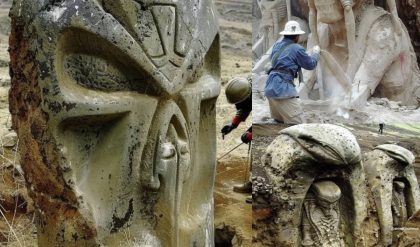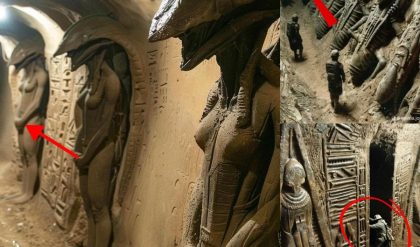In the 19th century, the Qajar princesses of Persia were celebrated as paragons of beauty, captivating hearts and minds with their distinctive charm and elegance. The Qajar dynasty, which ruled Persia from 1789 to 1925, was marked by a unique cultural and aesthetic sensibility, and the royal women of this era played a pivotal role in defining the standards of beauty.

A Unique Standard of Beauty
The Qajar princesses’ beauty was characterized by features that might seem unconventional by today’s global standards but were highly esteemed in their time. Portraits from the era often depict these royal women with strong, dark eyebrows that almost met in the middle, large almond-shaped eyes, and a fuller, natural figure. These attributes were seen as the epitome of feminine beauty and grace.
Influential Figures of the Court
Among the most renowned Qajar princesses was Princess Fatemeh Khanum “Esmat al-Dowleh.” She, along with her sisters and other female relatives, were not only symbols of beauty but also wielded significant influence within the court. Their roles extended beyond mere ornamentation; they were involved in cultural patronage and sometimes in the political machinations of the time.
Cultural Significance
The allure of the Qajar princesses was not just about physical appearance. Their beauty was deeply intertwined with the cultural and artistic expressions of the period. They adorned themselves with lavish jewelry, intricate hairstyles, and richly embroidered garments, reflecting the opulence of the Qajar court. Their portraits, often commissioned by the royal family, served as a testament to their status and the artistic inclinations of the era.
Legacy of Qajar Beauty
The legacy of the Qajar princesses’ beauty has endured through the centuries, becoming a subject of fascination and study. Their images continue to be celebrated in Persian art and are often referenced in discussions about historical perceptions of beauty. In modern times, their distinct aesthetic has even inspired contemporary fashion and art, illustrating the enduring impact of their unique charm.
Conclusion
The 19th-century Qajar princesses remain iconic figures in the annals of Persian history, symbolizing a distinctive ideal of beauty that transcended mere physical attributes. Their influence on culture, art, and fashion during their time has left a lasting imprint that continues to captivate and inspire. As symbols of an era, the Qajar princesses exemplify how beauty can be a powerful and enduring element of cultural identity.





